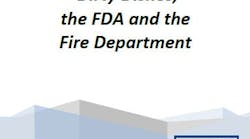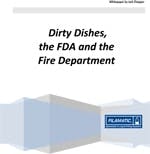The dishwasher lied to me! The green “Clean” indicator was illuminated, yet as I removed the warm and dry dishes, I could still see remnants of today's dinner on several of them. How could this be, I wondered? I had loaded the dishes carefully, made sure that they were spaced properly, and that each item had its own location and that no two items were nested. I had used high-quality detergent, the dirty sides of the dishes were facing the spray arms, and I pre-rinsed the heavily soiled items. Since I was in the adjacent room while the dish washing machine supposedly did its job, it sure seemed as if the machine had gone through the time necessary to successfully and properly clean the dishes. Yet a failure! How could this be?
My mind immediately began compiling a list of possibilities as to why the dishes weren't clean, even though the machine clearly indicated that they were. I thought: “Something's wrong mechanically”: Spray arm not rotating, clogged nozzles, a pump restriction… something.
Although unfamiliar with the appliance's nerve center, I did find enough online information to conduct a few tests. Thanks to modern digital controls and manual test functions pre-programmed into the dishwasher's embedded controller, a quick series of diagnostic tests eliminated all three of my conjectures. What now?


